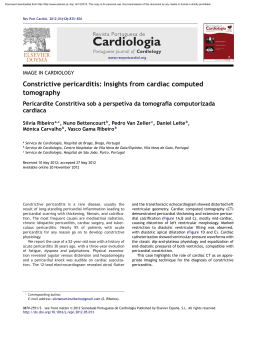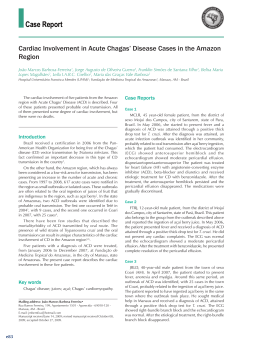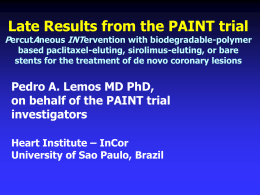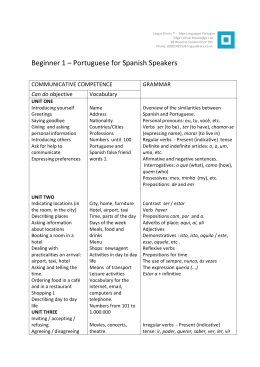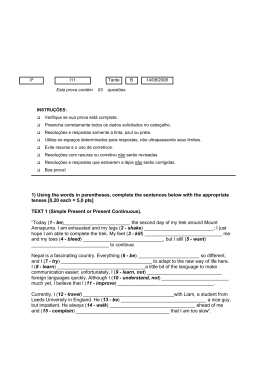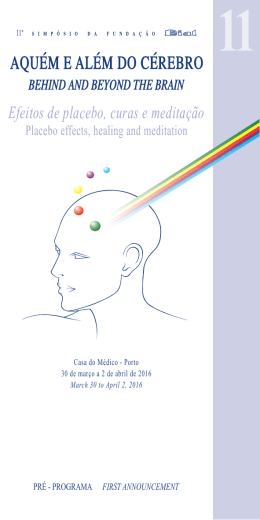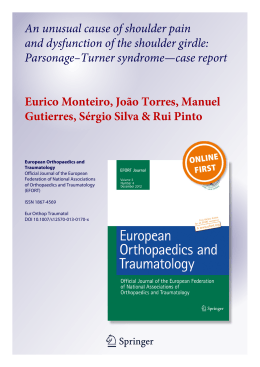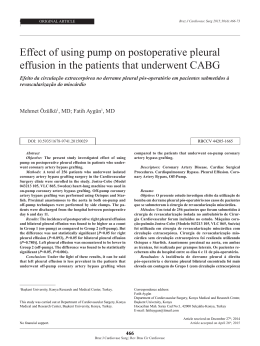Colchicine for Post-operative Pericardial Effusion (POPE): The Post-Operative Pericardial Effusion-2 (POPE-2) Study. A Multicenter, double-blind, randomized Trial P. Meurin1, S. Lelay-Kubas, B. Pierre, H. Pereira, B. Pavy, MC. Iliou, JL. Bussiere, H. Weber , JP. Beugin, T. Farrokhi, A Bellemain-Appaix, L. Briota, JY. Tabet, for the French Society of Cardiology. (1) Les Grands Prés; Villeneuve Saint Denis, France Disclosures Concerning this study: no conflict of interest - All the authors/investigators worked for free - Main funding source: French Society of Cardiology - Mayoly-Spindler company provided the sudy’s drug and placebo Other relationships with pharmaceutical companies: - Consultant for Servier - Research grant: Daïchi Sankyo Background: Post Operative Pericardial Diseases after day 7: PPS(post pericardiotomy syndrom) and POPEs are very different Symptoms: no PPS: yes POPES: Effusions: PPS: no or small POPES: yes, larger To sum-up: - PPS: acute pericarditis but low Tamponade Risk - POPES: initially asymptomatic but high Tamponade Risk 1- Meurin et al.POPE-1 Study. Ann Intern Med 2010. 2- Imazio et al.COPPS-1 Study. Eur Heart J 2010. 3- Imazio et al Am J Cardiol. 2011 POPE-2 Study: methods (1) Objective: to assess whether colchicine was effective in reducing post operative pericardial effusion (POPE) volume. Design: multicenter, randomized, double-blind, placebocontrolled study Setting: Ten post operative cardiac rehabilitation centers (POCRC). Patients: 197 patients at high risk of tamponade: i.e with a POPE of Grade 2,3 or 4. - Pts ≥ 70kg: 2.0 mg for the first day followed by a(colchicine maintenance or dose of 1 mg Treatment administration: 14 days daily placebo) - Pts < 70 kg 1 mg per day without a loading dose Methods (2): why did we include only patients with Grade 2,3 or 4 POPEs ? Echocardiographic classification 1, 2 (8-29) = 10% 1- Meurin P, Weber H, Renaud N et al. Chest 2004;125:2182-87. 2- Meurin et al. POPE-1 Study. Ann Intern Med 2010 From April 2011 to March 2013 Echocardiography at 8140 admission (16 ± 6 days after surge 252 Grade≥ 2 197 pts randomized Colchicine Placebo N= 98 N= 99 ITT: n= 197 (Per Protocol: n =182) 7888 Grade 0 or 1 : STOP Excluded (n=55) Refused consent (n=18) Indication for immediate pericardial drainage (n=12) Colchicine contraindication (n=3) Long-term colchicine treatment (n=3) Investigator decision (n=18) Participation in another study (n=1) Treatment duration: 14 days Results Conclusion Primary Endpoint: Mean Pericardial Effusion Grade Decrease Echo n°2 P=0,23 Secondary Endpoint: Cardiac Tamponades Moderate to large persisting (> 7 days) post-operative pericardial effusion: What does this study add? 1°) High risk patients: 11,5 % reoperation within 6 months: - 6.6 % tamponades in the 2 following weeks - Another 5 % will require pericardial drainages within 6 months 2°) Colchicine administration seems to be useless
Download
